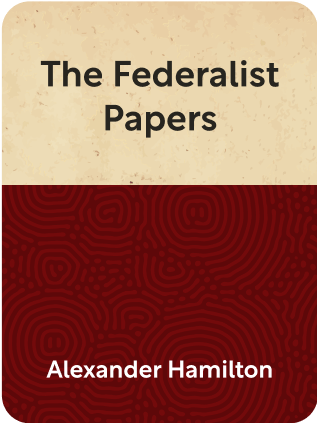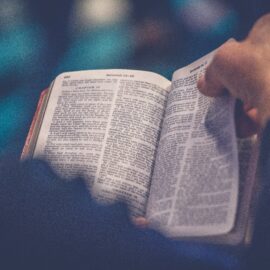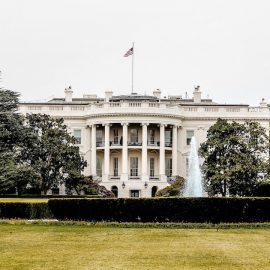

This article is an excerpt from the Shortform summary of "The Federalist Papers" by Alexander Hamilton. Shortform has the world's best summaries of books you should be reading.
Like this article? Sign up for a free trial here .
What is a republican form of government? Is America a Republic? How does Federalist 39 address the issue?
A republic is dependent on representatives to make decisions. Individual voters influence government through those representatives. Federalist 39 discusses the benefits for the new nation.
If you’re wondering “is America a republic?” and what the Constitution says, read on for the discussion of Federalist 39.
What Is a Republican Form of Government?
In a republic, decisions are made by representatives meeting in a designated capital, not by the people themselves in person. What is a Republican form of government best suited for? Popular passions are filtered through and tempered by more sober-minded representatives, making it harder for any single faction to achieve dominant status.
A large and populous country like the United States would be safer from tyrannical factions within the Union than it would be if it were split into a number of petty confederacies. Even if a faction seized control in one of the states, the largeness of the Union would make it difficult for it to extend that domination over the other states, let alone all of them. The size of the political community itself limited the spread of the political contagion.
A basic principle of republicanism is that the executive, legislative, and judicial functions must remain separate. Critics of the new Constitution argued that its provisions for the separation of powers were too weak and that the result would be a corrupt despotism.
But instead of striving for complete separation of powers (which was an impossibility), it was far more important to imbue the Constitution with the principle of checks and balances.
Federalist 39
The new Constitution was well-designed with a robust system of checks and balances to ensure that the branches remained coequal, that none reigned supreme over the others, and that each had the means to hold the others in check. Federalist 39 answers the question: Is America a republic?
The Republican Character of the New Government
Critics feared that the new government would represent a departure from republican principles for which the Revolution had been fought, empowering the few against the many. What Americans wanted was a government that derived its ultimate sovereign authority from the people. Federalist 39 addressed the concerns.
Thankfully, the new government was decidedly republican in character according to Federalist 39. In the first place, the Constitution was to be ratified by popular conventions and referenda in the states. This made the people direct parties to the new government. Once the Constitution was in operation, the House of Representatives was to be elected directly by the people of each state, according to the same voting qualifications by which people voted for representatives to their respective state legislatures. The Senate, meanwhile, was to be indirectly elected by the people via their state legislatures.
The President would also be indirectly elected by the members of the Electoral College, a body of electors chosen specifically for the purpose of choosing the chief executive. Lastly, the new Constitution expressly prohibited the establishment of titles of hereditary nobility. The supporters of the new government believed that these safeguards made it essentially representative in character.
But it was not enough for Federalist 39 to prove that the new government was republican. Critics and opponents worried that the government was too national; in other words, that it created a unitary government that ruled directly over the people, with no regard for the authority of the individual states.
(Shortform note: Some political observers have argued that the disproportionate representation in the Senate has become problematic and undermines democratic norms. At the time of the Constitution’s adoption, the largest state, Virginia, had a population roughly nine times greater than that of the smallest state, Georgia. Today, the most populous state, California, has a population approximately 70 times that of the smallest state, Wyoming. Put another way, Wyoming voters have 70 times the voting power of Californians within the Senate.)
The presidency, the chief executive of the federal government, was perhaps the most controversial and hotly contested feature of the Constitution. Anti-Federalist critics argued that these powers rendered the office tantamount to a monarch, a supreme and unaccountable despot dressed up in republican garb. But this was patently false. The President was nothing like a king—and attempts to mischaracterize the office as such were nothing more than demagogic efforts by the Constitution’s opponents to mislead the public.

———End of Preview———
Like what you just read? Read the rest of the world's best summary of Alexander Hamilton's "The Federalist Papers" at Shortform .
Here's what you'll find in our full The Federalist Papers summary :
- The genius of the founding fathers in how they designed the United States Constitution
- Why it was critical for the United States to form a union rather than stay separated as colonies
- How Alexander Hamilton anticipated social issues that are still relevant today






